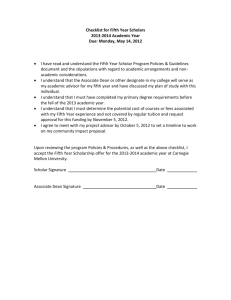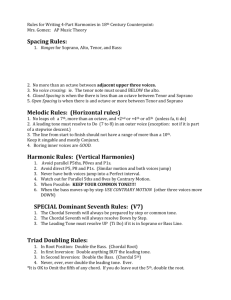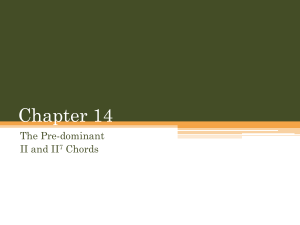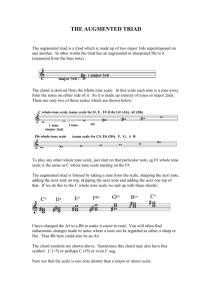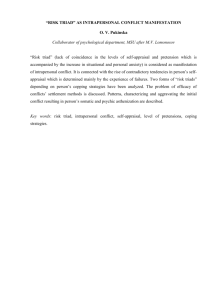The Supertonic Triad
advertisement
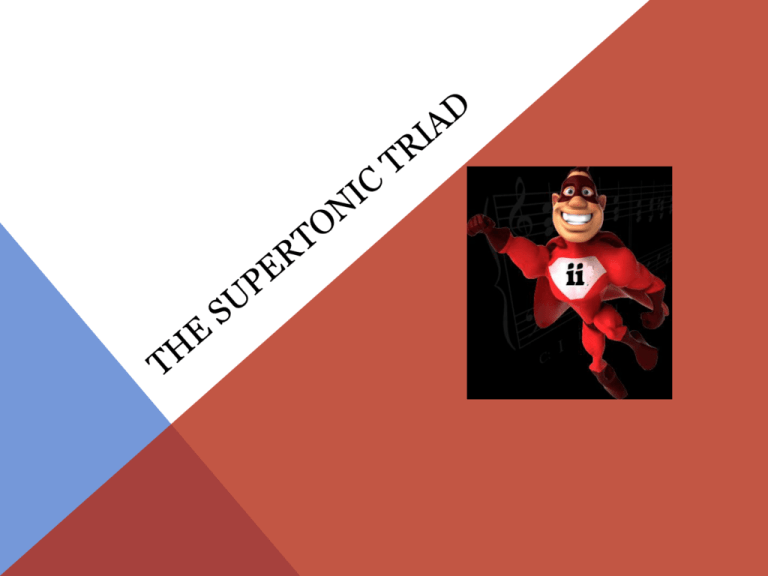
THE SUPERTONIC TRIAD Appear as a minor triad in the major mode and a diminished triad in minor The diminished triad is indicated by a small ( ° ) placed next to the roman numeral WHAT’S YOUR FUNCTION? Generally functions as a dominant preparation (in the predominant area) May be considered as a dominant to the dominant (consult the Circle of Fifths for further explanation) DOUBLING WITH THE SUPERTONIC A. ii in root position – preferential order: root, third, then fifth B. ii in first inversion – preferential order: third, root, then fifth C. ii ° and ii °6 – double the third; root is doubled occasionally NEVER double the fifth! VOICE LEADING WITH THE SUPERTONIC The Supertonic may be preceded by tonic or subdominant chords Moving from Tonic – Supertonic, both in root position: - upper voices move contrary to the bass - the third of I may move to third of ii Moving from Subdom. – supertonic, both in root position: - maintain the common tones VOICE LEADING WITH THE SUPERTONIC When either chord is in inversion, move in the smoothest way. CONNECTING SUPERTONIC TO DOMINANT Supertonic triad in root position: 1. the bass moves from the root of ii to the root of V 2. upper voices move in contrary motion to the nearest chord tone 3. the third of the ii may remain stationary, becoming the seventh of V 7 4. the fifth of iio in the minor mode is a tendency tone, usually resolving downward to the root of V COMMON TONE CONNECTION Can be used only when the quality of the ii is minor – never diminished A doubled root allows one tone to leap to the seventh of the V7 or remain stationary SUPERTONIC TRIAD IN FIRST INVERSION Voice leading is nearly the same to the IV – V progression Recall: The three upper voices move in contrary motion to the bass Note the doubling; the doubled root may leap or remain stationary COMMON TONE CONNECTION: MAJOR COMMON TONE CONNECTION: MINOR Note that the fifth of the supertonic triad must resolve down to avoid a melodic augmented second! DOUBLING / VOICE LEADING RECAP: A. ii in root position – preferential order: root, third, then fifth B. ii in first inversion – preferential order: third, root, then fifth C. ii ° and ii °6 – double the third; root is doubled occasionally NEVER double the fifth! Supertonic triad in root position: 1. the bass moves from the root of ii to the root of V 2. upper voices move in contrary motion to the nearest chord tone 3. the third of the ii may remain stationary, becoming the seventh of V7 4. the fifth of iio in the minor mode is a tendency tone, usually resolving downward to the root of V First Inversion voice leading is nearly the same to the IV – V progression Recall: The three upper voices move in contrary motion to the bass
